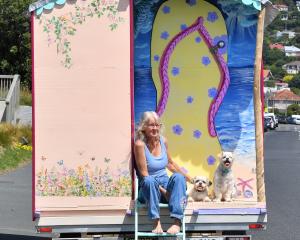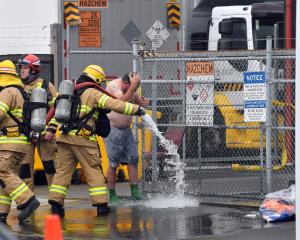
''It's absolute bull...'' Nicola Reeves, of Dunedin, said yesterday.
A panel of independent commissioners, on behalf of the Otago Regional Council, has granted Port Otago three-year consents to deposit dredged soil from Otago Harbour at Shelly Beach, Aramoana and Heyward Point.
These consents replaced Port Otago's 10-year maintenance dredging consents which expired in December 2011 and were in addition to those approved last year for Port Otago to dump dredged spoil offshore during its Next Generation project.
The consents allowed the port company to deposit 150,000cu m more at Heyward Point (350,000cu m) and 150,000cu m less at Aramoana (50,000cu m) than had been allowed under the previous 10-year consents.
Shelly Beach remained unchanged at 50,000cu m. It also allowed spoil from the capital dredging to be dumped at the sites as well maintenance dredging spoil.
Ms Reeves and the Surfbreak Protection Society opposed the consents at a hearing earlier this year. It was concerned for the future of the surf breaks protected under the New Zealand Coastal Policy Statement at Aramoana and Whareakeake (Murdering Beach).
She said the decision was sad and showed, even with a public consultation process, concerned people could be ''ignored, unaddressed and stonewalled''.
Surfbreak Protection Society (SPS) president Paul Shanks said the society was disappointed at the decision which it believed contravened policies in the coastal policy statement.
The society understood the changing world of shipping and the changes needed to the Otago Harbour, but to ''subsidise forestry and dairying by destroying a coast of national significance and the surf venues that lay within it showed a lack of insight'', he said.
''So, on behalf of the New Zealand surfing community, SPS will have to seriously consider opposing this poor decision in the next legal process...otherwise every other coastal tourist venue, be it surfing, fishing or otherwise, are under threat.''
The independent panel said in its written decision limiting the consent to three years and adopting an adaptive management strategy, supported by appropriate monitoring, was a ''sufficiently cautious approach'' to spoil disposal.
''[It] provides an opportunity to ensure that any long-term risk to the national recognised surf breaks will be minimal.''
The supply of sediment from dredge spoil in the past had beneficial effects in terms of replenishing Shelly and Aramoana Beaches.
The conditions were intended to ensure the ongoing disposal of dredge spoil could be undertaken with minimal impact.
Monitoring would indicate if adverse effects happened and then the regional council had the power to review consents, it said.
''While some surfers remain convinced that this does not provide sufficient protection for surf breaks, it is our view that it does, and that the proposal offers the best chance of satisfying objectives of all parties in the longer term.''
A lack of evidence meant the panel could not be certain of the tourism-derived benefits of the surfing attractions but it was ''left in no doubt'' the continuing efficient operation of the port did bring ''substantial economic benefit'' to Dunedin and Otago.
Port Otago chief executive Geoff Plunket said the port was pleased with the decision but understood some groups would prefer the consents not be granted.
However, the port was committed to finding ways to work with them long-term.
The port believed the dredging would have no impacts on the surf breaks.
''We would never do anything to compromise the surf breaks.''
The aim of the port was to apply for long-term consents in three years, a move consistent and compatible with the Next Generation consents.
The monitoring imposed by the consent conditions was already in the port's work plan and next week it would deploy wave and current monitoring equipment in Blueskin Bay and at the off-shore disposal site.












